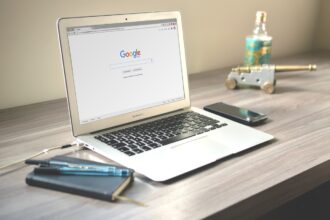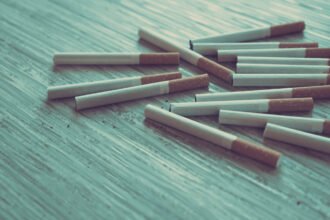 Patient engagement today is often being used as a technology initiative, whether it be through a CRM or an integrated marketing campaign using traditional and digital means, or even with outbound surveys and risk assessments given to patients regarding their care. No matter how you slice it, it seems that the conversation of “patient engagement” is more about the tool than the technique.
Patient engagement today is often being used as a technology initiative, whether it be through a CRM or an integrated marketing campaign using traditional and digital means, or even with outbound surveys and risk assessments given to patients regarding their care. No matter how you slice it, it seems that the conversation of “patient engagement” is more about the tool than the technique.
 Patient engagement today is often being used as a technology initiative, whether it be through a CRM or an integrated marketing campaign using traditional and digital means, or even with outbound surveys and risk assessments given to patients regarding their care. No matter how you slice it, it seems that the conversation of “patient engagement” is more about the tool than the technique. It is with a humble approach to listening, learning from, and understanding how and when patients need information, resources, and care–and then delivering the right message and support along the way which fosters better patient engagement.
Patient engagement today is often being used as a technology initiative, whether it be through a CRM or an integrated marketing campaign using traditional and digital means, or even with outbound surveys and risk assessments given to patients regarding their care. No matter how you slice it, it seems that the conversation of “patient engagement” is more about the tool than the technique. It is with a humble approach to listening, learning from, and understanding how and when patients need information, resources, and care–and then delivering the right message and support along the way which fosters better patient engagement.
The Irony of Patient Engagement
It’s almost ironic that we use the words “patient engagement” to increase the interaction “they” have with their respective healthcare providers and plans. Patients are engaged. They are engaged with their families, they are engaged with their work-life balance, and they are engaged with their care. However, for a number of years, many health institutions and insurance plans did not interact with their patients and members unless it was initiated by the patient or care provider, such as “Dr. Mom.” Empathy and compassion are not extended by inanimate objects. Therefore patients don’t engage with logins…They interact by typing and clicking, but it’s a means.
Patients engage with people, providers, and caseworkers of the plans they trust. No app does it, nor does a CRM driven campaign with direct mail. Even logging into the various patient portals has its limitations (people typically don’t go to their PC and log into their portal if a loved one is having a medical need). Of course this is easier said than done.
Fortunately, there are new ways in which the last mile of communication can be delivered to the patient from providers, plans, and pharma. For example, if a patient receives a text from someone they know, they will read it 97% of the time within 15 minutes. That’s because they are “engaged” with the sender in some way. They will also text a loved one in an emergency, to ensure they receive pertinent information. The talent is still getting it all to work together. The strategic approach to “engaging patients” requires delivering the right message at the right time. Just enough bite-sized information to encourage, remind, inquire and listen… and then, allow or foster action to be taken.
Granted, there have always been those outstanding doctors and health organizations that followed up just as well as they prepared their patients. But typically, we’re talking about institutions and organizations that are very busy being dedicated to treating a condition or situation in the moment. The majority of the clinical workforce is trained and compensated to dealing with a just-in-time operational business model. It’s a necessary role, so how can we support its success as medicine and health move from transactional medicine to relational care?
Taking Engagement Tips from Other Industries
Today, patients and plan members require more coordination and communication. Other industries, such as hospitality, treat the same people as loyal customers with a more seamless approach. In a few minutes, a customer can book a hotel, flight, travel insurance, and car overseas –and have an Expedia® or Travelocity® act as their concierge across different service providers and countries –with everything from travel tips to just-in-time reminders sent to them throughout their mobile lifestyle prior, during and post excursion. Ironically, a customer’s health plan, primary care physician, and clinical specialist can’t communicate with the same in an efficient and timely way while within the same town.
What Healthcare Organizations Can Do Now
What happens before and what happens after care traditionally has had very few resources to make all the preparation and follow up to a procedure or intervention. The health systems were designed to treat people at their most urgent moment of need, however, the need really spans across the continuum of their lifespan and lifestyle; and thus, patients are seeking health information and tips around wellness and fitness to help them stay healthy before and after care. It is this realization that has led to the financial ramifications that brought healthcare reform to the forefront.
For the first time the vision of being a healthy patient and plan participant is one in the same –in the eyes of both health systems and health plans, respectively. Health plans can save money by keeping the cost of care down by helping patients engage in their health every day; just as much as, health systems and hospitals can keep their outcomes higher (and readmission rates lower) by encouraging better health and lifestyle practices for their patients. It is also in the best interest of pharmaceutical companies to encourage those taking their medication to comply with and finish their dosage and regimen. It is this alignment that can help make patients feel that everyone is working on their behalf, so long as the coordination of care and communication is in-sync with patients’ respective needs and lifestyle. So how does your organization plan on engaging? Feel free to share your thoughts and approach to engaging your patients and customers.
Originally appeared on Gold Mobile
(patient engagement / shutterstock)








